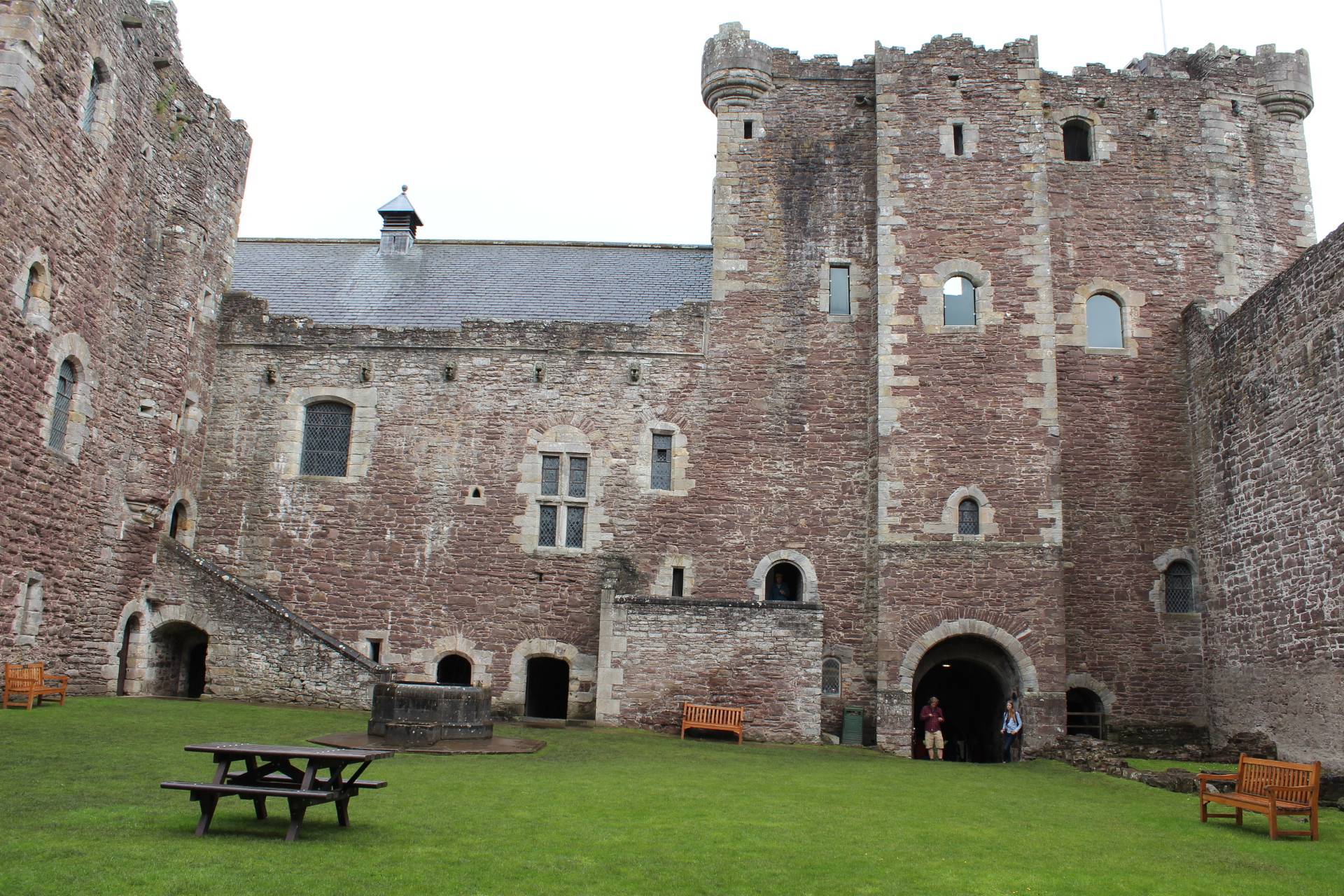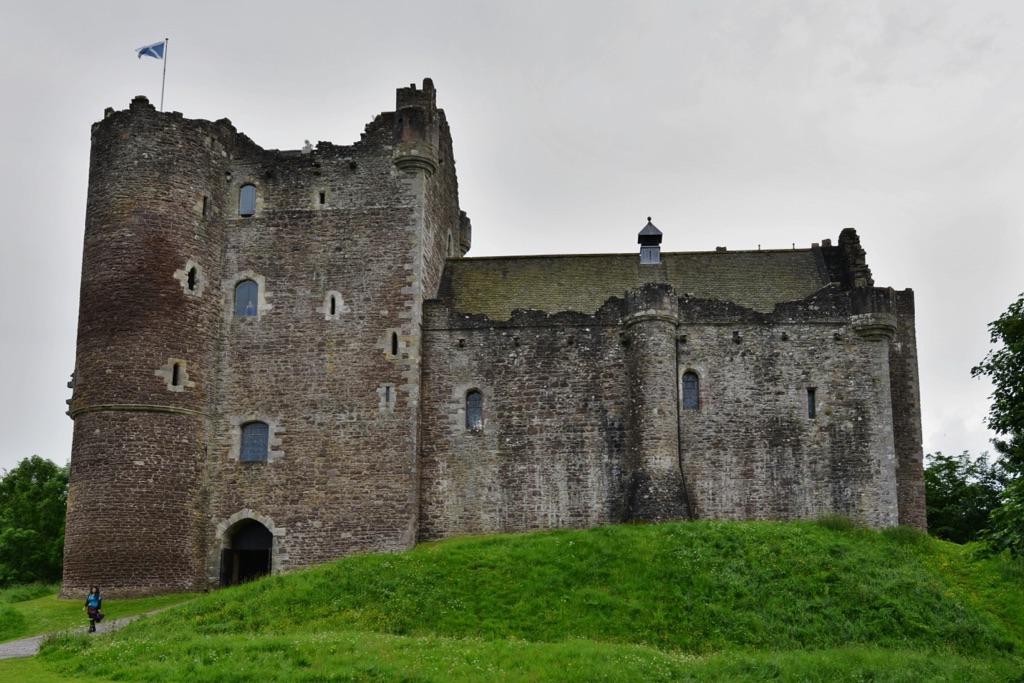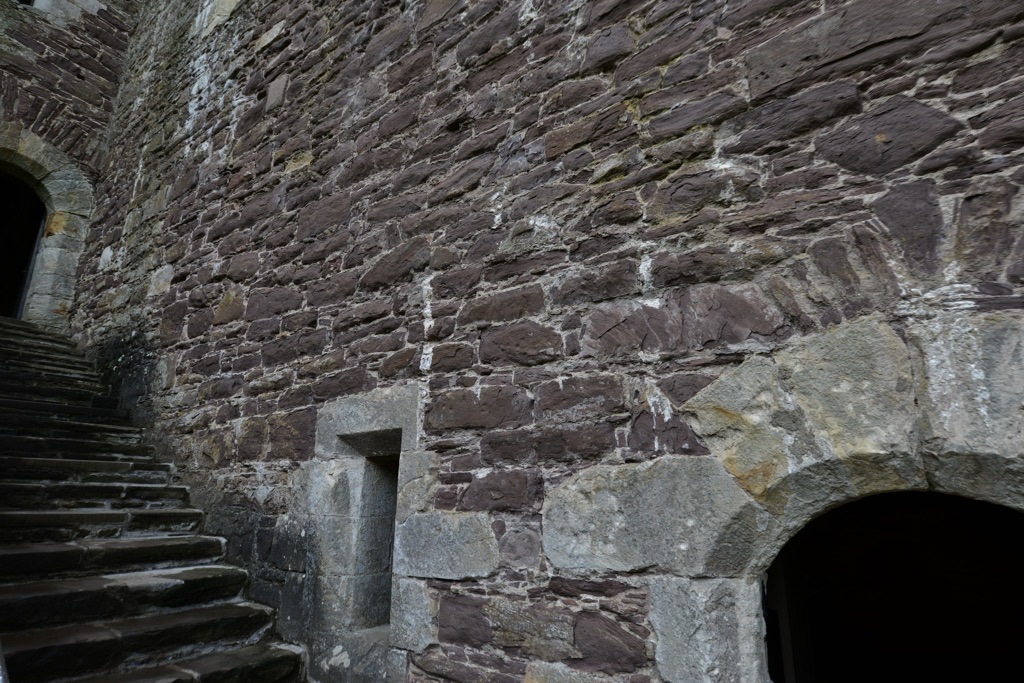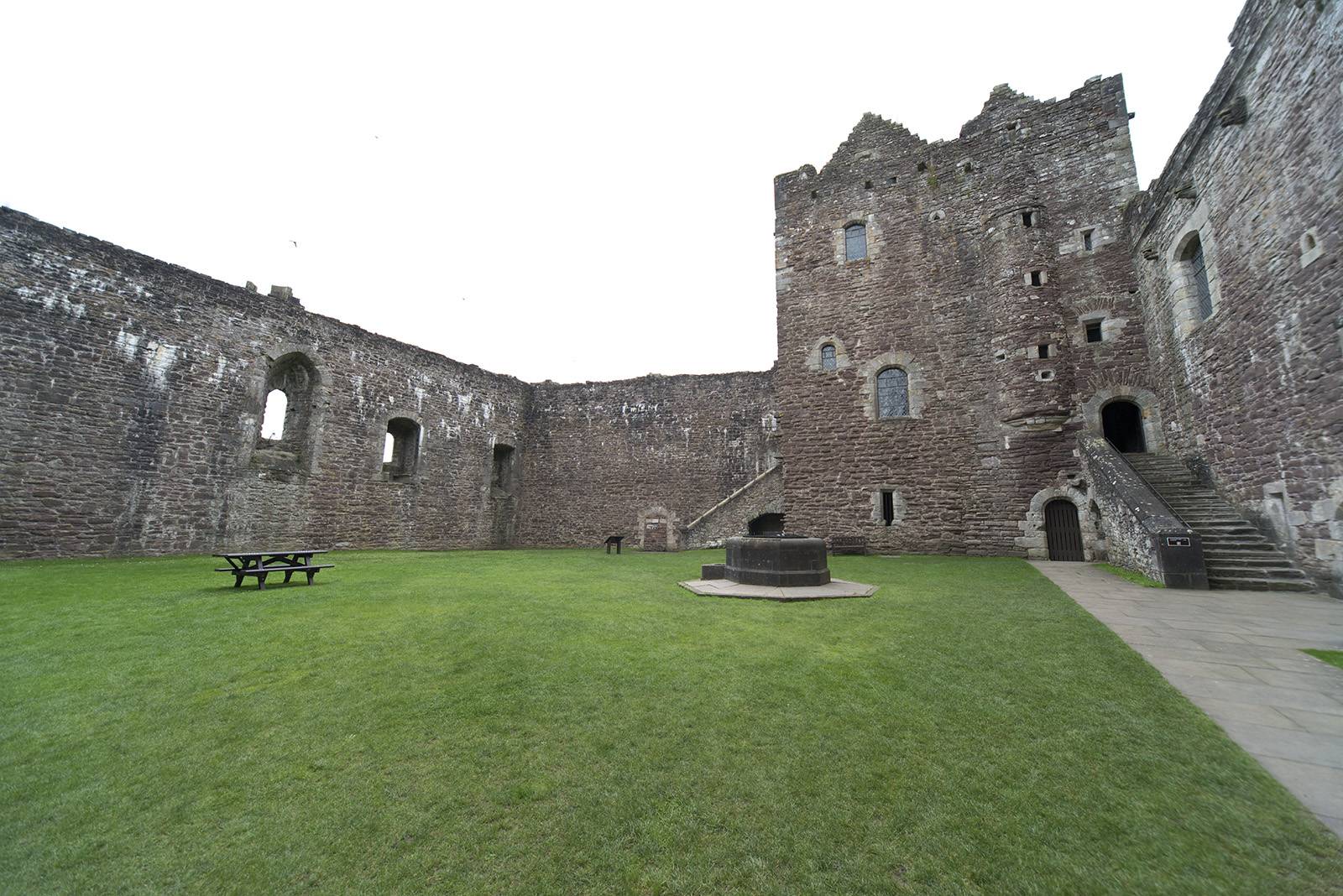Doune Castle stands as a medieval stronghold near the village of Doune, in the Stirling district of central Scotland. The castle is a magnificent example of a late medieval fortress and is notable for its impressive gatehouse, well-preserved domestic quarters, and the striking 100-foot high Great Hall. Built in the 14th century, Doune Castle has been a silent witness to a range of historical events and figures, including its creation by Robert Stewart, Duke of Albany, and its use in the 18th century Jacobite Risings. Today, it is a recognized historic monument and a popular filming location for movies and television series, such as “Monty Python and the Holy Grail” and “Outlander.”
Get your dose of History via Email
Historical Background of Doune Castle
Doune Castle’s history begins with its construction in the late 14th century by Robert Stewart, Duke of Albany. He was the son of King Robert II of Scotland and the ruler of the kingdom in all but name. The castle was built on the site of an earlier fortification and served as a royal retreat and hunting lodge. Over the centuries, it has seen several changes in ownership and has been a key player in Scotland’s turbulent history.
The castle’s strategic importance came to the fore during the Scottish Wars of Independence. It was also the scene of significant historical events, such as the holding of Mary, Queen of Scots, in 1567. In the 18th century, Doune Castle was occupied by Jacobite troops during the Risings. The castle’s role in history is not just limited to battles and royalty; it also reflects the architectural and social changes of the times.

After falling into disuse, Doune Castle was rediscovered in the 19th century. It underwent restoration, led by the Earl of Moray. The castle’s rediscovery and restoration were part of a wider Victorian interest in medieval architecture and history. This period saw the castle return to the public consciousness after years of neglect.
The castle’s builders and inhabitants have left their mark on its architecture and lore. The Duke of Albany’s influence is evident in the castle’s design, which was ahead of its time in terms of comfort and defense. Later, the castle became a dower house for the queens of the Stewarts, adding to its historical significance.
Doune Castle has also been the backdrop for historical films and television series, further cementing its place in popular culture. Its well-preserved medieval structure offers a window into the past, making it a valuable educational resource and a must-visit for history enthusiasts.
About Doune Castle
Doune Castle is renowned for its striking architecture, which includes a formidable gatehouse that leads to a courtyard enclosed by high walls. The gatehouse itself houses the Lord’s Hall, with its intricately carved oak screen, musicians’ gallery, and double fireplace. This hall is a testament to the castle’s former grandeur and the power of its original inhabitants.
The castle’s construction showcases the use of local stone, and its design reflects the transition from traditional fortress to comfortable residence. The Great Hall, which stands at 100 feet in length, was the social heart of the castle, where feasts and state functions were held. Its high windows, massive timber roof, and large central hearth are characteristic of the period’s architecture.

One of the most distinctive features of Doune Castle is its well-preserved domestic quarters. These include the Duke’s Hall, with its ornate wooden ceiling, and the kitchen, which is equipped with an enormous fireplace and bread oven. The castle also boasts a series of chambers and passageways that reveal the complexity of medieval castle life.
The castle’s defenses were state-of-the-art for their time, with a portcullis, murder holes, and thick curtain walls. Despite these fortifications, the castle’s design also prioritized residential comfort, a duality that speaks to the evolving role of castles during this period.
Today, Doune Castle is maintained by Historic Environment Scotland and is open to the public. Visitors can explore the castle’s many rooms and learn about its history through a well-curated exhibition. The castle’s preservation allows for a deep dive into medieval Scottish architecture and the lifestyle of its noble inhabitants.
Theories and Interpretations
Doune Castle has inspired various theories and interpretations over the years, particularly regarding its use and significance. Some historians suggest that the castle’s grand design was meant to reflect the Duke of Albany’s power and ambition. Others believe that the castle was designed to host royal gatherings, which is supported by the size and grandeur of the Great Hall.

The mysteries of Doune Castle include the purpose of certain architectural features, such as the unusual double fireplace in the Lord’s Hall. This feature has led to speculation about the social and domestic practices of the time. The presence of a musicians’ gallery also suggests that entertainment played a significant role in the life of the castle.
Historical records have been used to match the castle’s features with known events and figures. This has helped to create a more complete picture of Doune Castle’s role in Scottish history. However, gaps in the records leave room for interpretation and further research.
Dating of the castle has been carried out using architectural analysis and historical documentation. This has established the late 14th century as the period of its construction. However, the exact timeline of subsequent modifications and restorations is less clear, inviting ongoing study.
The castle’s enduring legacy in popular culture has also led to new interpretations of its history and significance. As a filming location, Doune Castle has become a symbol of Scotland’s medieval past, both in the academic world and in the public imagination.

At a glance
Country: Scotland
Civilization: Scottish
Age: Late 14th century (circa 1380s AD)
Conclusion and Sources
The information in this article has been obtained from reputable sources, ensuring an accurate and comprehensive understanding of Doune Castle’s history and significance.

